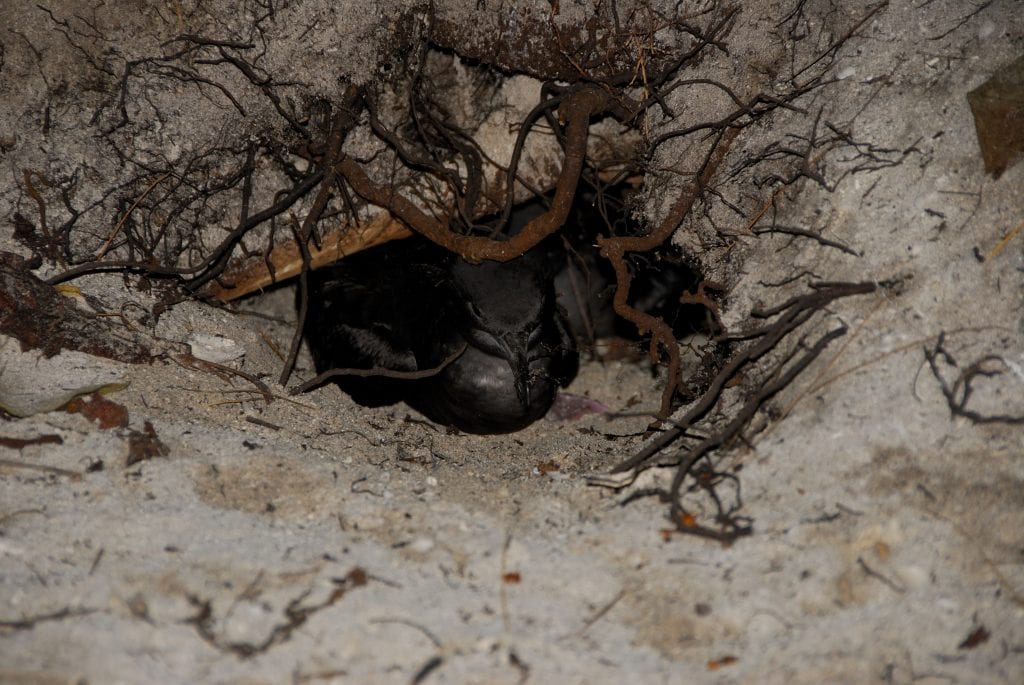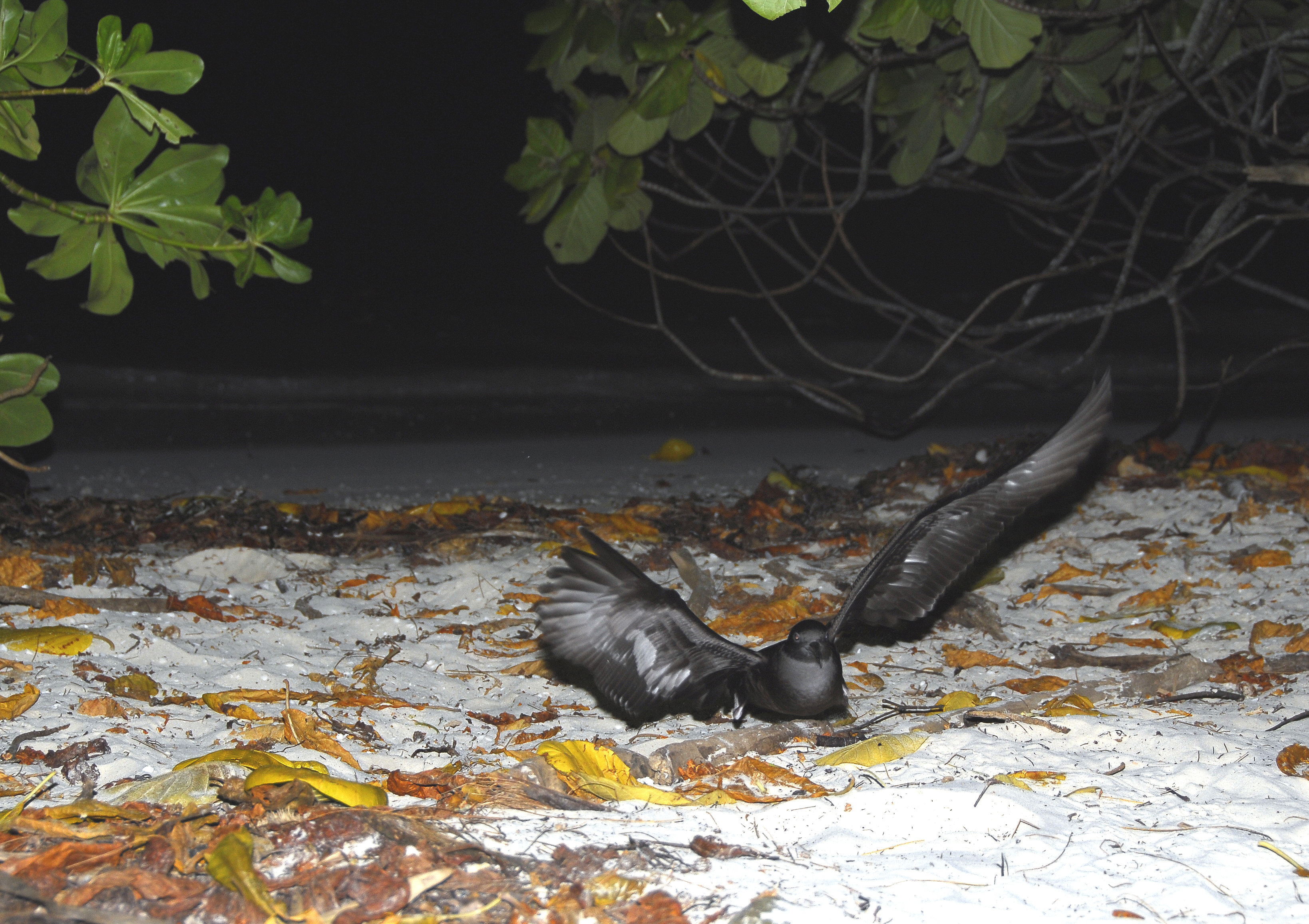The ghosts of D’Arros
Words by Kerryn Bullock
The wedge-tailed shearwater Puffinus pacificus is the largest of the tropical shearwaters. This marine species is unremarkable in appearance, both sexes being dark brown above and below, with a dark grey bill and a wedge-shaped tail.
It does, however, have two great characteristics that make it one of the most popular inhabitants of D’Arros Island. The first characteristic is the sound these seabirds make; at sea they are silent, but when they come ashore and are in their breeding burrows at night it is a very different story. They make the most terrifyingly eerie wailing call that can only be described as a crying baby ghost. Even the bravest island residents have admitted that the hairs on the back of their neck stand up at the howling chorus and that they cycle just that little bit faster to get out of the forest after dark.
Adults leave the breeding colonies at first light to head to feeding areas and return to their burrows only under the cover of darkness. They are graceful and elegant flyers, with long wings that enable them to move across the sea in long sweeping arcs of leisurely flight. They catch fish and squid on the sea surface or plunge deep underwater for them, using their feet and wings for propulsion.
Wedge-tailed shearwaters are very good parents, feeding their single chick so well that by the time it is ready to fledge (at about three months) it can weigh up to 20% more than an adult. This brings me to the species’ second endearing characteristic. Although the birds are very capable in the air, they are ‘sitting ducks’ on land as they bounce and hop around comically, like a semi-deflated balloon in the wind. They seem to have no control over their landing gear and do a kind of flop, bounce and roll to enter their burrows.
This awkwardness on land leaves the shearwaters vulnerable to exploitation and humans have collected and eaten the birds – especially the fat, meaty chicks – into extinction on some islands. On D’Arros, however, as well as on the larger neighbouring islands of St Joseph Atoll (Fouquet, Benjamin, Paul and Ressource islands), there is still a healthy breeding population. During the 2009–10 breeding season, 254 pairs of wedge-tailed shearwaters were recorded to have nested on D’Arros Island, while no fewer than 28,655 pairs nested on islands within St Joseph Atoll.


